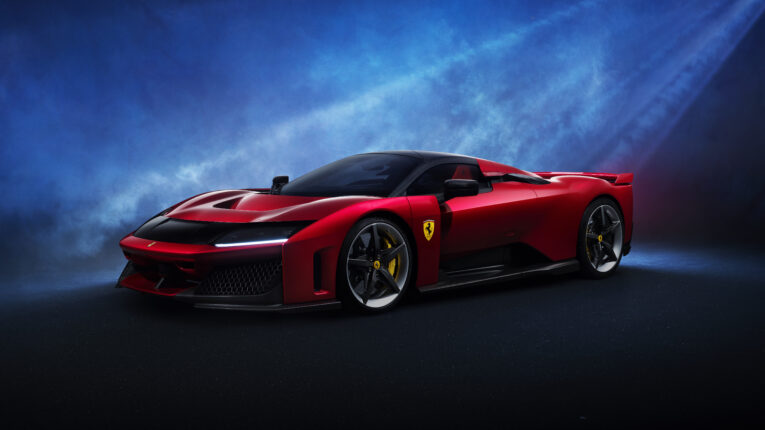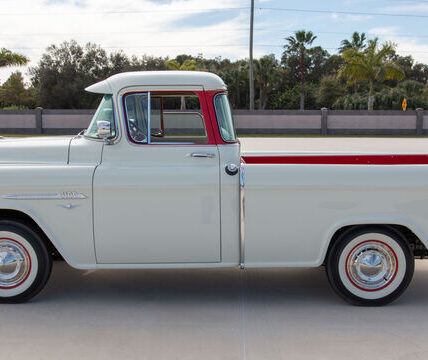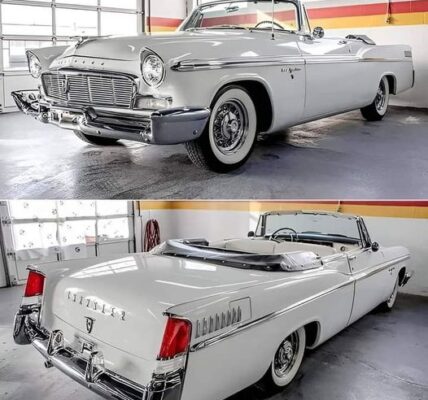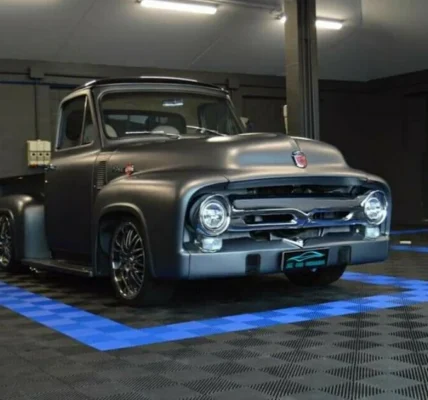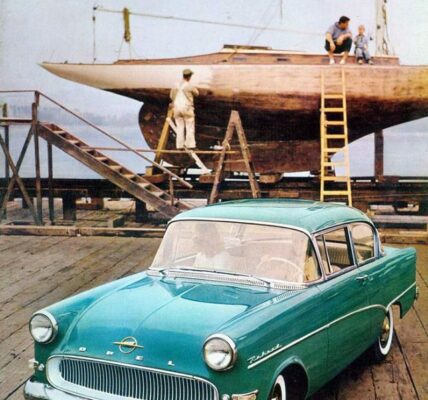
In the grand saga that is the history of motoring, the debut of Maranello’s latest halo car is always a spectacle—like a seismic event that sends tremors through the industry, and indeed the very souls of die hard petrolheads worldwide. People will always remember what they were doing or where they were when anything of particular cultural significance occurs, and that absolutely applies when Ferrari unveils its latest flagship. But before we explore the new Ferrari F80, it would be remiss of us not to recap on the first five episodes.
Back in 1984, the swivel eyed lunacy of the Group B rally era ushered in what some would argue to be the world’s first ‘Hypercar’ – the fire spitting and frankly sinister looking Ferrari 288 GTO. A car so muscular, it could probably beat Dwayne Johnson in a bench press contest.

The 288 GTO will always be one of our fave Fezzas
Although Group B was canned before the GTO had a chance to shine (or let’s be honest, terrify its occupants) that fierce DNA was passed down the line, culminating in what we now recognize as Ferrari’s crowning achievement. The coup de grâce. The King. El numero uno. The F40.

Ferrari’s F40, AKA: The Daddy
We won’t wax too lyrically about this car because let’s face it, that drum has been beaten more times than a karaoke rendition of Bohemian Rhapsody, but suffice to say the F40 is widely regarded as the gold standard for what a supercar should be. It was the first production car to shatter the 200mph barrier. It had two turbos the size of West Sussex hamlets, turbo lag that can be measured with a calendar instead of stopwatch and a rear wing so big it had it’s own postcode. More of that please, we all decreed.

Ferrari listened, and they came back with the F50 a few years later. Even more exclusive, this beast was fitted with a monstrous V12 derived from Alain Prost’s F1 car, producing a sound so profound that if you slapped it on a record it would no doubt go platinum. It’s a stunningly purposeful piece of engineering that has aged like a fine wine – complex, intriguing, and best enjoyed responsibly. And while it may not have caused the same stir as its legendary predecessor, it has firmly secured its place in automotive history and continues to command respect like the wise elder at a family reunion.
The dawn of a new millennium ushered in a wave of thrilling motorsport technology, and Ferrari, feeling particularly bold, decided to double down with the F60. It was incredibly cocky actually, because the Italians decided to bypass the F+10 nomenclature completely and name it after a bloke. Specifically a bloke called Enzo. Brave choice.
It needed to be impressive, and boy did it deliver. While it may not have won any beauty pageants, it more than made up for any perceived lack of looks with a ferocious appetite for obliterating asphalt, whether on the open road or at the racetrack. In reality neither the F40 or the F50 were exactly conventional stunners, but they each imparted their own interpretation of beauty—brutish, purposeful and aggressively alluring, like an MMA fighter who also dabbles in a bit of ballet on the side.

In that sense, the Enzo was a case of “meet the new boss, same as the old boss.” Sure, it featured a paddle shift gearbox and a dashboard brimming with buttons allowing you to adjust the severity of your impending doom, but at its core it was a naturally aspirated V12 monster that looked thrilling no matter how you sliced it.
Ferrari then faced a pivotal choice: either strut its stuff with unabashed bravado or play it safe and call the next instalment the F70. Spoiler alert: they opted for the former.

Yep, they went for the first option with the LaFerrari, a name so presumptuous it practically begs for a crown to be plonked atop its testa rossa. And it rightly earned that title, winning over anyone who had the privilege of taking it for a drive. Although there was a bunch of new electronic trickery included, representative of a new era of F1, the heart was still a whacking great V12, and aesthetically it bore more than a passing resemblance to the Enzo, albeit with its sharp corners subtly rounded off—think of it as the Enzo’s suave younger sibling, fresh from a makeover.
It’s undeniably a superb piece of design, though it might lack the ‘shock and awe’ factor that left fans of its predecessors gasping in admiration. Still, it’s a head-turner in a world where beauty often goes hand in hand with brute force.

So here we are then ladies and gentlemen. We arrive at the season finale, the Ferrari F80, and looking at what we have on offer here we wouldn’t be surprised if this was the closing iteration of the Ferrari halo car as we know it. Ferrari aren’t feeling so cocksure this time around for some reason, choosing to name its newest creation the F80, which is fine. Except for one thing. We don’t actually like it.
Let’s kick things off with the styling. Aside from the black strip on the bonnet—a nod to the ‘Plexi’ 365 Daytona, which we’ve also seen gracing the fabulous 12Cilindri—we’re left scratching our heads over the lack of recognizable DNA. Honestly, we wish they hadn’t even bothered with that token homage. On the 12Cilindri it’s a classy, well-executed nod to the car’s lineage but on the Ferrari F80? To us it just looks like a moustache. Or a monobrow. Or perhaps the car has had some sensitive information redacted.

The lack of DNA to what came before wouldn’t be a problem if the Ferrari F80 had that same slap in the face presence as say, the F40, but it just doesn’t. Don’t get us wrong, it’s far from ugly, but in the context of the hypercar arena it looks like Ferrari have designed a real version of the Lego version of the real version. It’s a slab of warmed up leftovers from Ferrari’s CAD kitchen and there aren’t really many significant features that set it apart from a lot of the recent range.
That’s the first critical error because it simply doesn’t scream excitement from every angle, at least not to us. Perhaps the worst crime is that if you remove all the badges and paint it black, the average Joe wouldn’t be able to identify it as a Ferrari straight away. Hey-ho, maybe if we look under the skin there’s redemption to be found in the engine department.

It certainly looks that way on paper. With over 1200bhp on tap, a 0-60 time of just over two seconds and a top speed of approximately a million miles an hour, it has bona fide hypercar credentials. That is until you realise those numbers are coming from a V6. Now, we love a V6 as much as the next person but on Ferrari’s top shelf spirits? No bueno.
Not only is it a V6, but it also comes loaded with a buffet of hybrid tech and a smorgasbord of turbos. All well and good but if F1 has taught us anything lately it’s that hybrid and turbo technologies often silence the glorious symphony of an engine. Sure, the F40 had its share of turbos, but their gargantuan size produced a theatrical flair as they spooled up, complemented by the delightful cacophony of its raucous V8. Those delightfully silly cracks, bangs and whooshes made any sacrifice in exhaust tone seem utterly worth it.

One thing we can be nigh on certain about is that on the track the Ferrari F80 will be an absolute weapon. There’s an asymmetrical tub, active suspension, a plethora of things that move about at speed, and basically a ton of downforce – quite literally, at 155 mph. So a lot of aerodynamics then? Yes, many.
We are acutely aware that Ferrari’s road cars have historically always mirrored the tech on track at the time, and the relentless pursuit of boundaries (if only to smash them into oblivion) has always been a core mission objective, but it’s important to remember something Il Commendatore himself once said: “Aerodynamics are for people who can’t build engines” Touché, Enzo, touché.

While it’s unrealistic to expect Ferrari to stop pushing the envelope for Scuderia’s F1 marketing machine, there is a balance to be struck there and we think they’ve rather missed the point.
The focus on engineering over aesthetics has created a frankly uninspired design that fails to capture excitement, and that is what a supercar, especially a hypercar – should be about.
The sad thing is, we know Ferrari can do so much better. The yardstick that is the F40, for instance, remains an irrefutable masterpiece that’s still celebrated to this day for its ability among those lucky enough to have driven one.
That’s not misty eyed nonsense either. It may not be the fastest any more, not by a long shot, nor is it the most powerful, but it’s a car that still creates excitement standing still from a thousand yards. So the question is, why do we need a car with a gazillion horsepower and technology to break the sound barrier? We’re not expecting another F40, but the essence of what made that car so special appears to have been completely missed here.

While it’s wise to hold off on definitive judgment until we can get behind the wheel of a Ferrari F80 – an increasingly challenging endeavour with just 799 set to be made – the core issue remains unaddressed. In an ever-homogenized automotive landscape, the F80’s rather generic styling fails to evoke that childlike thrill, even through a mere glance on screen. That, ultimately, is the F80’s greatest transgression: it’s not just another car; it’s a missed opportunity to stand out and inspire wonder in a world craving authenticity.
We’re convinced that petrolheads around the globe would readily trade a bit of speed, downforce, and engineering finesse for the chance to experience a modern interpretation of what made Ferrari’s greatest achievement so extraordinary. And even if you could stump up the almost four million dollar asking price you still need to be selected first. Here’s another option instead.
